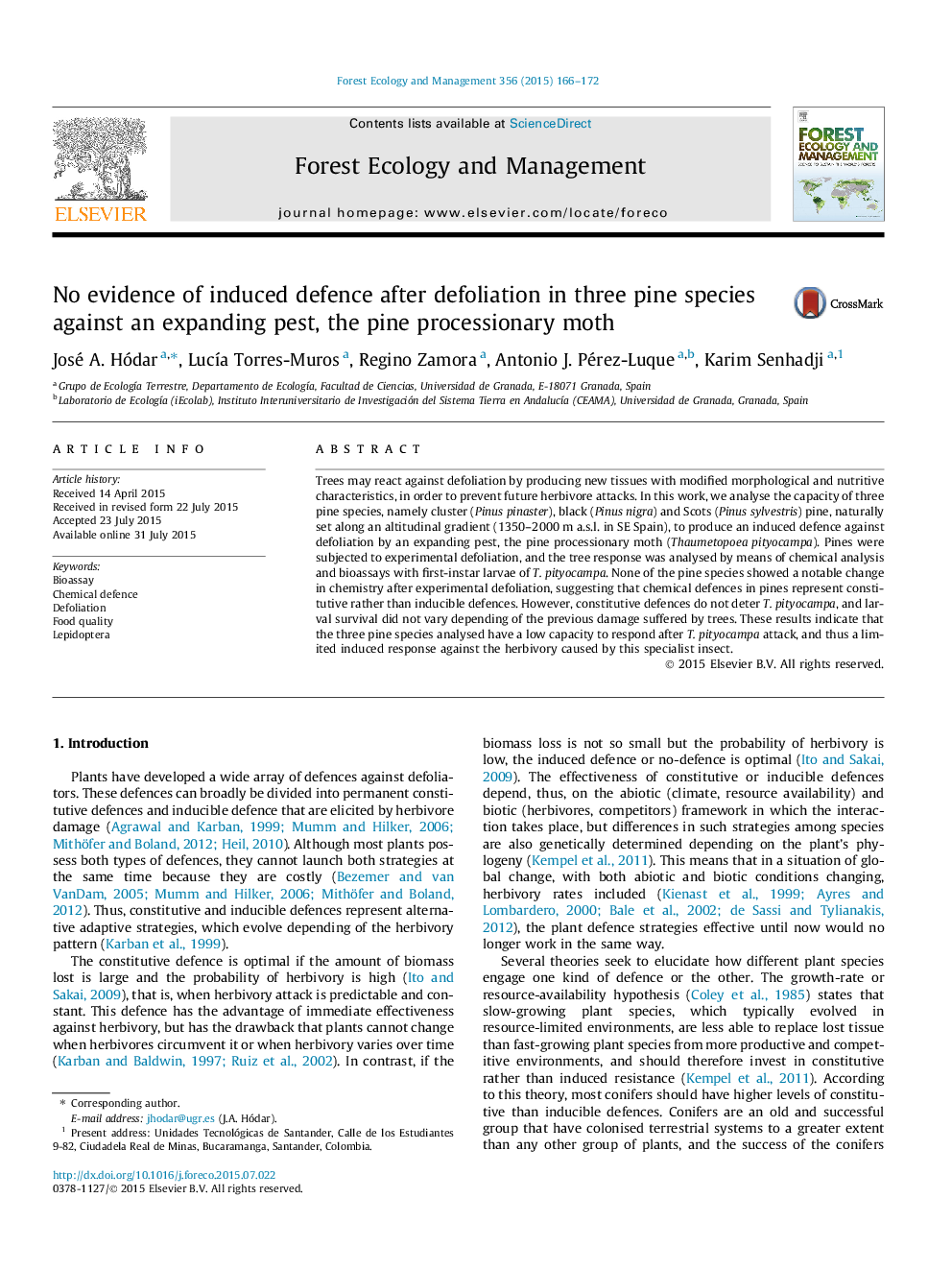| کد مقاله | کد نشریه | سال انتشار | مقاله انگلیسی | نسخه تمام متن |
|---|---|---|---|---|
| 86197 | 159171 | 2015 | 7 صفحه PDF | دانلود رایگان |

• We analyse the capacity of three pine species to produce an induced defence.
• Pines were experimentally defoliated by Thaumetopoea pityocampa larvae.
• Tree response was analysed by chemical analysis and bioassays with larvae.
• Neither tree chemistry nor larval survival varied significantly after defoliation.
• Chemical defences in pines are constitutive rather than induced.
Trees may react against defoliation by producing new tissues with modified morphological and nutritive characteristics, in order to prevent future herbivore attacks. In this work, we analyse the capacity of three pine species, namely cluster (Pinus pinaster), black (Pinus nigra) and Scots (Pinus sylvestris) pine, naturally set along an altitudinal gradient (1350–2000 m a.s.l. in SE Spain), to produce an induced defence against defoliation by an expanding pest, the pine processionary moth (Thaumetopoea pityocampa). Pines were subjected to experimental defoliation, and the tree response was analysed by means of chemical analysis and bioassays with first-instar larvae of T. pityocampa. None of the pine species showed a notable change in chemistry after experimental defoliation, suggesting that chemical defences in pines represent constitutive rather than inducible defences. However, constitutive defences do not deter T. pityocampa, and larval survival did not vary depending of the previous damage suffered by trees. These results indicate that the three pine species analysed have a low capacity to respond after T. pityocampa attack, and thus a limited induced response against the herbivory caused by this specialist insect.
Journal: Forest Ecology and Management - Volume 356, 15 November 2015, Pages 166–172